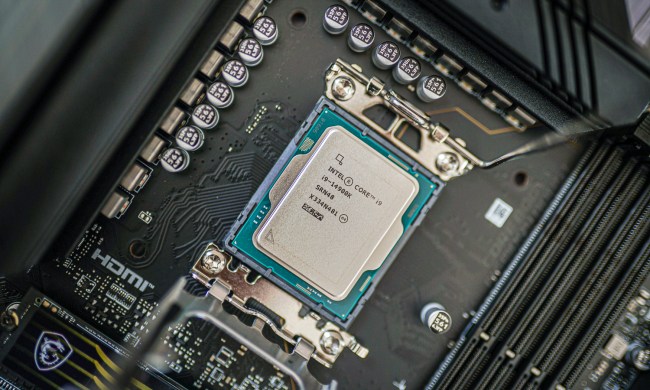AMD has just unveiled some internal benchmarks of its Ryzen AI 9 HX 370 processor. Although it’s been a few months since the release of the Ryzen AI 300 series, AMD now compares its CPU to Intel’s Lunar Lake, and the benchmarks are highly favorable for AMD’s best processor for thin-and-light laptops. Let’s check them out.
For starters, AMD compared the Ryzen AI 9 HX 370 to the Intel Core Ultra 7 258V. The AMD CPU comes with 12 cores (four Zen 5 and eight Zen 5c cores) and 24 threads, as well as 36MB of combined cache. The maximum clock speed tops out at 5.1GHz, and the CPU offers a configurable thermal design power (TDP) ranging from 15 watts to 54W. Meanwhile, the Intel chip sports eight cores (four performance cores and four efficiency cores), eight threads, a max frequency of 4.8GHz, 12MB of cache, and a TDP ranging from 17W to 37W. Both come with a neural processing unit (NPU), and AMD scores a win here too, as its NPU provides 50 trillion operations per second (TOPS), while Intel’s sits at 47 TOPS. It’s a small difference, though.

Digging into the results, AMD compares the two CPUs in a number of games, claiming major wins across the board. AMD says that the Ryzen AI 9 HX 370 is on average 75% faster than Intel, and we can see that in these tests. Some titles, such as F1 24 and Forza Horizon 5 show massive gains of over 50 frames per second (fps) at 1080p on medium settings.
It’s worth noting that both laptops were running with all of the game-boosting technologies available to each vendor for this test. In the case of AMD, this includes FSR 3 where applicable, as well as AMD’s one-button game-boosting solution, AMD HYPR-RX. Next, AMD also compared native performance with FSR 3 and Intel’s rival upscaler XeSS.

Things even out quite a bit when comparing native performance without any bells and whistles. Although the exact data isn’t available, it looks like the Ryzen AI 9 HX 370 and the Core Ultra 7 258V are fairly close in titles like Cyberpunk 2077, Ghost of Tsushima, and F1 24. Intel’s native performance shoots ahead in Hitman 3 and Marvel’s Spider-Man Remastered, while AMD obliterates it in Call of Duty: Black Ops 6.
Of course, everything looks different when you look at the portion of the benchmark that shows off the power of FSR 3 versus XeSS. There’s no contest: AMD’s gaming tech wins by a landslide in every title.

The last test compares the base version of FSR and AMD’s HYPR-RX. Intel sees a decent boost from enabling FSR, which, unlike Nvidia’s DLSS 3, is available to GPUs from all vendors. AMD still leads by a large margin, although, like before, native performance is not that far apart.
The timing for these benchmarks is interesting, considering that both AMD Ryzen AI 300 series and Intel Lunar Lake have been out for a while. The Lunar Lake processor is also not quite the equivalent to the Ryzen AI 9 HX 370, which can explain some of the performance gap. Regardless, AMD’s performance-boosting tech bodes well for thin-and-light devices.
We’ve already seen the CPU in action in laptops such as the Asus Zenbook S 16, where it did an impressive job. The Ryzen AI 9 HX 370 is also set to appear in a GMKtec mini-PC — something akin to the Intel NUC — and in handhelds. Those devices, more than anything else, might largely benefit from what AMD is highlighting here, as without a discrete GPU, this type of tech can really come in handy.




